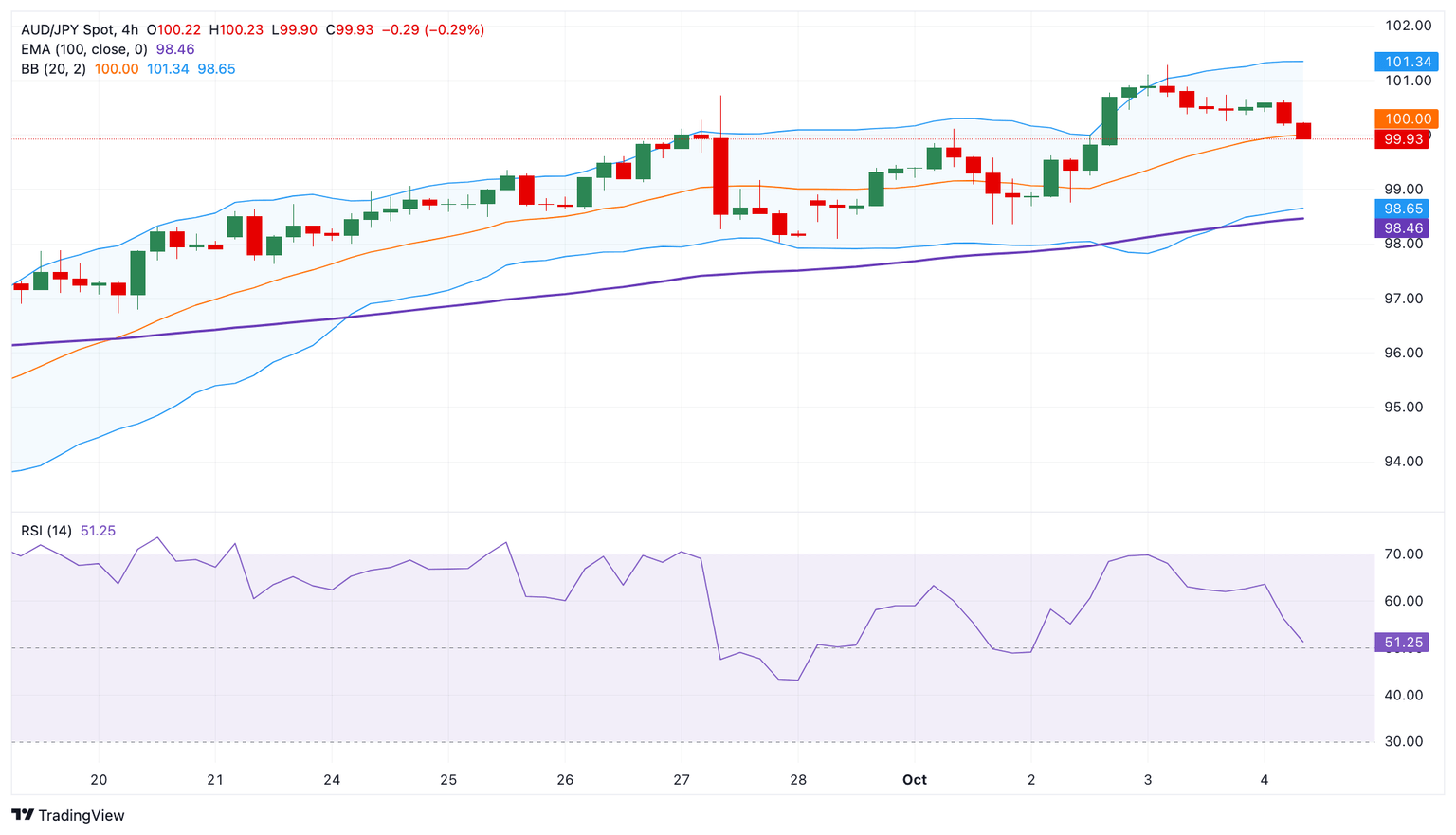AUD/JPY Price Forecast: Attracts some sellers near 100.00, further consolidation cannot be ruled out
- AUD/JPY weakens to near 100.00 in Friday’s early Asian session, down 0.50% on the day.
- The cross keeps the bullish vibe above the key 100-period EMA, but RSI indicator shows neutral momentum.
- The immediate resistance level is located at 100.73; the first downside target emerges at the 99.00 psychological level.

The AUD/JPY cross extends its decline to around 100.00 during the early European session on Friday. The Japanese Yen (JPY) climbs against the Australian Dollar (AUD) after comments from Japan’s ministers earlier in the day.
Japan's new economy minister Ryosei Akazawa said on Friday that the timing of changes in the Bank of Japan’s (BoJ) monetary policy should be aligned with the broader goal of exiting deflation. Additionally, Japan's Chief Cabinet Secretary Yoshimasa Hayashi announced on Friday that new Prime Minister Shigeru Ishiba has instructed the compilation of a comprehensive economic package. Hayashi added that he will submit a supplementary budget to Parliament after the lower house election.
According to the 4-hour chart, the positive outlook of the AUD/JPY cross prevails as the cross holds above the key 100-period Exponential Moving Averages (EMA). However, the further consolidation cannot be ruled out as the Relative Strength Index (RSI) hovers around the midline, suggesting the neutral momentum of the cross.
The immediate resistance level emerges near the high of October at 100.73. Further north, the next upside barrier is seen at 101.35, the upper boundary of the Bollinger Band. The additional upside filter to watch is the 102.00 psychological mark.
On the downside, the 99.00 psychological level acts as an initial support level for the cross. Any follow-through selling below this level will see a drop to the 98.45-98.65 region, representing the 100-period EMA and the lower limit of the Bollinger Band. Extended losses will see the next downside target at 97.63, the low of September 23.
AUD/JPY 4-hour chart
Japanese Yen FAQs
The Japanese Yen (JPY) is one of the world’s most traded currencies. Its value is broadly determined by the performance of the Japanese economy, but more specifically by the Bank of Japan’s policy, the differential between Japanese and US bond yields, or risk sentiment among traders, among other factors.
One of the Bank of Japan’s mandates is currency control, so its moves are key for the Yen. The BoJ has directly intervened in currency markets sometimes, generally to lower the value of the Yen, although it refrains from doing it often due to political concerns of its main trading partners. The BoJ ultra-loose monetary policy between 2013 and 2024 caused the Yen to depreciate against its main currency peers due to an increasing policy divergence between the Bank of Japan and other main central banks. More recently, the gradually unwinding of this ultra-loose policy has given some support to the Yen.
Over the last decade, the BoJ’s stance of sticking to ultra-loose monetary policy has led to a widening policy divergence with other central banks, particularly with the US Federal Reserve. This supported a widening of the differential between the 10-year US and Japanese bonds, which favored the US Dollar against the Japanese Yen. The BoJ decision in 2024 to gradually abandon the ultra-loose policy, coupled with interest-rate cuts in other major central banks, is narrowing this differential.
The Japanese Yen is often seen as a safe-haven investment. This means that in times of market stress, investors are more likely to put their money in the Japanese currency due to its supposed reliability and stability. Turbulent times are likely to strengthen the Yen’s value against other currencies seen as more risky to invest in.
Author

Lallalit Srijandorn
FXStreet
Lallalit Srijandorn is a Parisian at heart. She has lived in France since 2019 and now becomes a digital entrepreneur based in Paris and Bangkok.

















